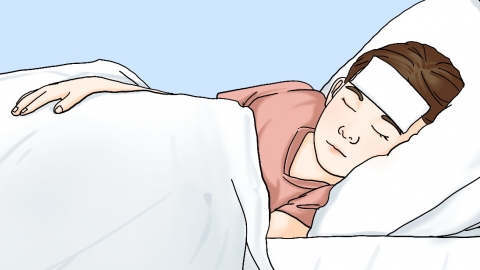Why does a child have a fever with a hot forehead and cold limbs, and what should be done?
Generally, the main reasons why a child's forehead is hot while their limbs are cold during a fever include blood redistribution during the rising phase of body temperature, weak peripheral circulation function, pediatric acute tonsillitis, pediatric acute bronchitis, and early-stage sepsis. If discomfort symptoms appear, it is recommended to seek timely treatment at a formal hospital. Detailed analysis is as follows:
1. Blood Redistribution During the Rising Phase of Body Temperature
At the beginning of a fever, when the body temperature rises rapidly, the body prioritizes blood supply to important organs such as the brain and heart, reducing blood flow to the limbs, causing the forehead to be hot while the limbs are cool. At this time, warm water immersion of the limbs or gently rubbing the arms and legs can help promote blood circulation. Properly adding clothing to the limbs for warmth and measuring body temperature every 30 minutes to monitor changes are also recommended.

2. Weak Peripheral Circulation Function
Children's peripheral blood vessels are small, and their circulation function is not yet fully developed. During a fever, the heart's pumping capacity is limited, making it difficult to adequately supply blood to the limbs, resulting in a hot forehead and cold limbs. Daily activities such as clapping hands and kicking legs can help improve peripheral circulation. Encourage the child to drink more warm water during a fever and elevate the limbs to assist in improving blood flow and alleviating cold extremities.
3. Pediatric Acute Tonsillitis
Bacterial or viral infections cause inflammation of the tonsils. The inflammatory stimulation leads to fever, while the body's metabolism becomes disordered, causing peripheral vasoconstriction, resulting in a hot forehead and cold limbs, often accompanied by sore throat and difficulty swallowing. Under a doctor's guidance, medications such as children's Yankailing granules, Cefixime granules, and Ribavirin granules can be taken to fight infection and alleviate inflammation. Applying warm towels to the limbs can also help promote local blood circulation.
4. Pediatric Acute Bronchitis
Infection of the bronchi by pathogens causes inflammation, which leads to fever. The infection also affects systemic blood circulation, reducing blood supply to the limbs, causing a hot forehead and cold limbs, accompanied by coughing and sputum production. Under a doctor's guidance, medications such as ambroxol and clenbuterol oral solution, cefaclor dry suspension, and children's Kechuanling granules can be taken to relieve cough, expel phlegm, and fight infection. Once the inflammation is controlled, the cold limb symptoms will gradually improve.
5. Early-Stage Sepsis
Severe infections can lead to sepsis. In its early stage, the body constricts peripheral blood vessels to ensure blood supply to vital organs, causing a hot forehead and cold limbs, often accompanied by listlessness and reduced urine output. Immediate medical attention is necessary. Under a doctor's guidance, medications such as piperacillin sodium and tazobactam sodium for injection, ceftriaxone sodium for injection, and dopamine injection may be used to fight infection and maintain blood pressure. If serious organ damage occurs, continuous renal replacement therapy may be required.
In daily life, it is important to adjust the child's clothing according to weather changes to avoid catching a chill. Keep indoor air circulating and reduce the child's exposure to pathogens. Monitor the child's mental state and limb temperature closely during a fever, and promptly implement warming and cooling measures. Regularly vaccinate the child to enhance immunity.




